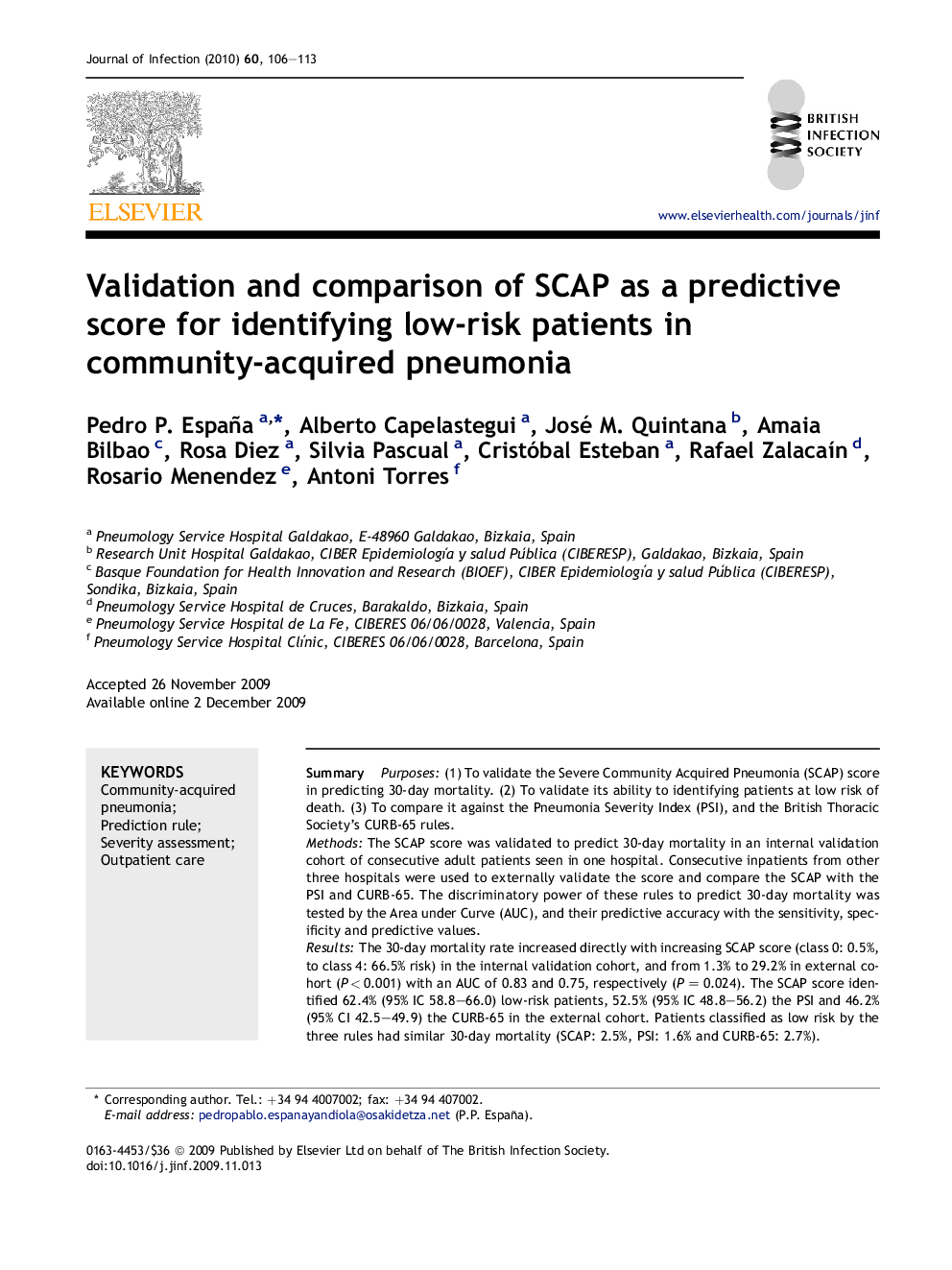| Article ID | Journal | Published Year | Pages | File Type |
|---|---|---|---|---|
| 3375385 | Journal of Infection | 2010 | 8 Pages |
SummaryPurposes(1) To validate the Severe Community Acquired Pneumonia (SCAP) score in predicting 30-day mortality. (2) To validate its ability to identifying patients at low risk of death. (3) To compare it against the Pneumonia Severity Index (PSI), and the British Thoracic Society's CURB-65 rules.MethodsThe SCAP score was validated to predict 30-day mortality in an internal validation cohort of consecutive adult patients seen in one hospital. Consecutive inpatients from other three hospitals were used to externally validate the score and compare the SCAP with the PSI and CURB-65. The discriminatory power of these rules to predict 30-day mortality was tested by the Area under Curve (AUC), and their predictive accuracy with the sensitivity, specificity and predictive values.ResultsThe 30-day mortality rate increased directly with increasing SCAP score (class 0: 0.5%, to class 4: 66.5% risk) in the internal validation cohort, and from 1.3% to 29.2% in external cohort (P < 0.001) with an AUC of 0.83 and 0.75, respectively (P = 0.024). The SCAP score identified 62.4% (95% IC 58.8–66.0) low-risk patients, 52.5% (95% IC 48.8–56.2) the PSI and 46.2% (95% CI 42.5–49.9) the CURB-65 in the external cohort. Patients classified as low risk by the three rules had similar 30-day mortality (SCAP: 2.5%, PSI: 1.6% and CURB-65: 2.7%).ConclusionThe SCAP is valid to predict 30-day mortality among low-risk patients and identifies a larger proportion of patients as low-risk than the other studied rules.
